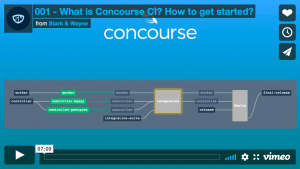Posts by: Ashley Gerwitz

At the heart of any Kubernetes deployment strategy lies The Pod. The workhorse of distributed container solutions, the Kubernetes Pod glues together a bunch of containers to a single networking stack and process namespace. Pod processes can communicate with one another over loopback (127.0.0.1), and signal each other using POSIX signal(7) mechanics. Strange then, that

Ahoy, There! This is just one blog post in an ongoing series about fun things you can do with the Kubernetes CLI, kubectl. We have a whole bunch of these over on our Silly Kubectl Tricks page. Also don’t forget to checkout out the video series on YouTube! kubectl can pull a lot of data

Ahoy, There! This is just one blog post in an ongoing series about fun things you can do with the Kubernetes CLI, kubectl. We have a whole bunch of these over on our Silly Kubectl Tricks page. Also don’t forget to checkout out the video series on YouTube! Once you start managing more than one

Learn a little about Concourse CI and get your own Concourse CI running on your laptop with Docker Compose (previously these instructions showed Vagrant). NOTE: the instructions below have been updated in 2020 to use Docker Compose, rather than Vagrant. Learn more from our Concourse Tutorial. NOTE: The https://concourse-ci.org/ has been given a new name

Ahoy, There! This is just one blog post in an ongoing series about fun things you can do with the Kubernetes CLI, kubectl. We have a whole bunch of these over on our Silly Kubectl Tricks page. Also don’t forget to checkout out the video series on YouTube! The building block of almost all Kubernetes

Ahoy, There! This is just one blog post in an ongoing series about fun things you can do with the Kubernetes CLI, kubectl. We have a whole bunch of these over on our Silly Kubectl Tricks page. Also don’t forget to checkout out the video series on YouTube! When you deploy stuff for a living,

Ahoy, There! This is just one blog post in an ongoing series about fun things you can do with the Kubernetes CLI, kubectl. We have a whole bunch of these over on our Silly Kubectl Tricks page. Also don’t forget to checkout out the video series on YouTube! UNIX/Linux system administrators the world over regularly

Traditionally, Linux separates users and their processes into two different groups: root (user ID 0) and everyone else. Back in 1999, with the 2.2 Linux kernel release, kernel developers started breaking up the privileges of the root user into distinct capabilities, allowing processes to inherit subsets of root’s privilege, without giving away too much. Fast-forward

One of the brilliant aspects of BOSH that has been brought across to Kubernetes by the Quarks & KubeCF teams has been the generation of internal secrets. Internal client needs a secret to talk to internal Redis? No one cares what it is; just generate a good one and share it with the two entities.